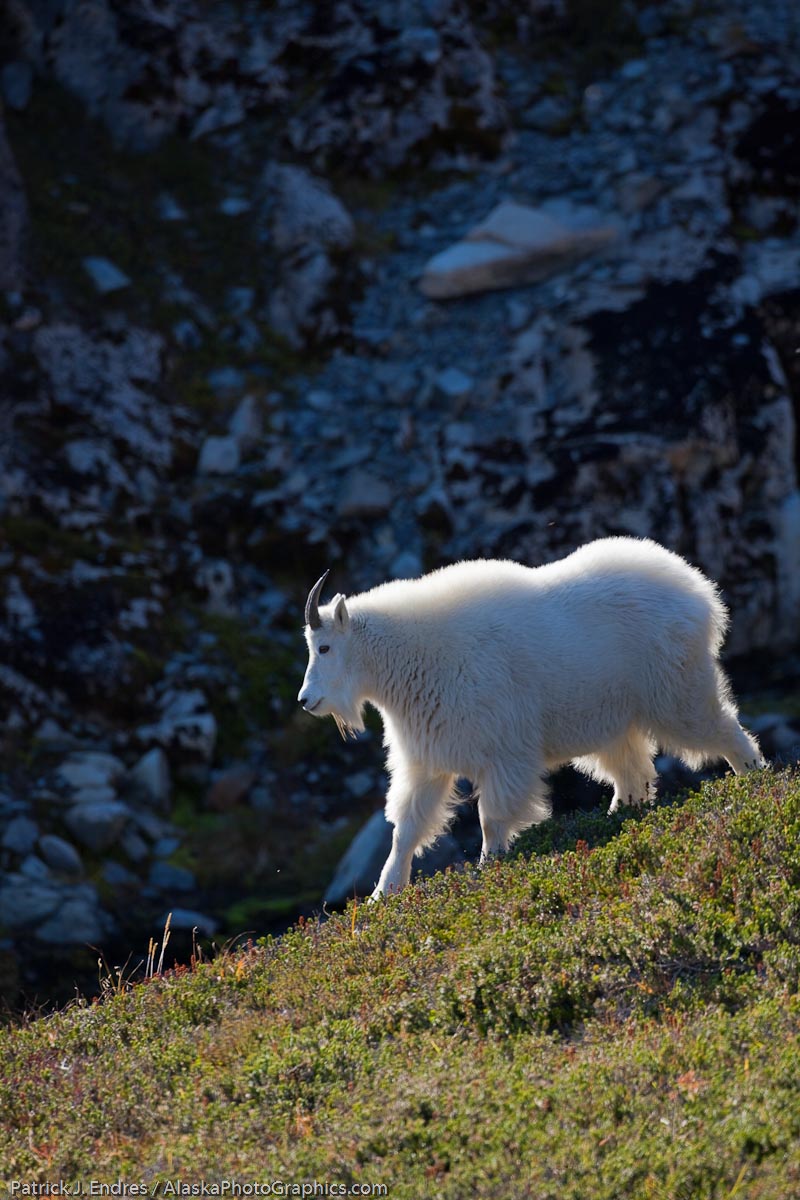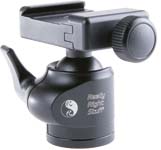
Mountain goat, Kenai Peninsula, southcentral, Alaska. Canon 5D Mark II, 500mm f/4L IS, 1/320 sec @f5.6, ISO 100.
Prior to 2009, the last time I went in search of mountain goats I carried a gun in my hands. That was 26 years ago. After climbing precipitous rocky cliffs for an entire day in pursuit of a billy, I almost gave up many times, thinking surely I would kill myself if I fell or slipped. But the energy and conquest resident in youth drowned out even the loudest whisper of wisdom. By the day’s end I finally secured a vantage point in which to scope my prey. As I put the cross hairs on the animal, I watched the wind swirl its beautiful white coat in pinwheel patterns. Then I shot. The goat fell. And my first thought, unlike the sense of gratification found on other hunts, was: “why did I do that?” I climbed down to the billy goat, since it had fallen from a near vertical cliff. A friend and I prepared the animal and packed it out on a long journey back to camp. I remember that trek well since my pack weighed nearly as much as I did.
That was the end of my hunting days with a gun. I’m not anti-hunting, and I eat Alaska wild game, but at that point for me, the desire to hunt simply fell away. Some years later when reading “East of Eden” by John Steinbeck, I found a striking kinship with a character he described in these few words: “…and he no longer needed to conquer animals”.
Fast forward 26 years. In September, I went in search for mountain goats again, but this time with my camera. I headed for Alaska’s Kenai Peninsula, known to have many populations of mountain goats along its rugged landscape. I spotted a number of groups on the hillsides, but the reality of me gaining access to them in a single day was very unlikely. They are masters of the high and vertical country, and it can look so easy going from the ground, but I know better. I settled on a more conventional trail which offered good access, but nearly 4000 feet of vertical ascent! I presume that a number of the trails on the Kenai can provide good access to goat country, but I have not trekked many of them. My recent excursion has inspired me to do some more exploring in the coming years.

Really Right Stuff BH-25
Packing light and traveling efficiently becomes increasingly more critical when you have to climb in high country, and especially in goat country. I debated back and forth on whether or not to take my 500mm, due to its size and weight. But, I just could not leave it behind, not just because of the goats, but for the possibility of birds or bears that I might also find in the area. As it turns out, I would have done fine with a little shorter lens. I took my 5D II and left the 1Ds III behind, to save a little weight. In addition, I had my 100-400, 24-105 and 16-35, and a tiny Gitzo (GT0541 carbon fiber-1.7lbs) tripod fitted with an RRS (BH-25 Ultralight) ballhead–I love that set up when needing to travel light. I might add that staying in trekking shape helps out a lot for trips like this. I use an Osprey backpack, which has a rigid but lightweight frame that ventilates against the back extremely well, and distributes the weight very well also. Much better than the best photo backpack, of which I own many.
The cloudless day, although beautiful, was not what I was hoping for–but who can complain about a beautiful day in Alaska’s mountains! Bright sun on white mountain goats does not go well with a photographer. I ended up shooting them later in the afternoon when the light softened. I chose to include this frame because backlighting was an effective way to isolate the animal against a shadowed and rocky background. This hunt, in which I was an observer and not a taker, left me with a much different feeling than my foray 26 years ago. And, my pack on descending the mountain was a whole lot lighter.






